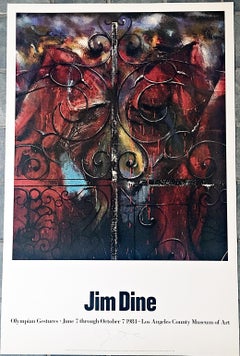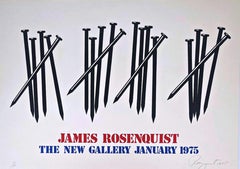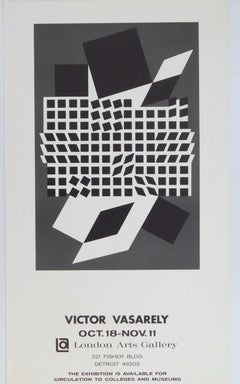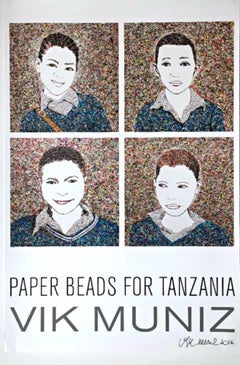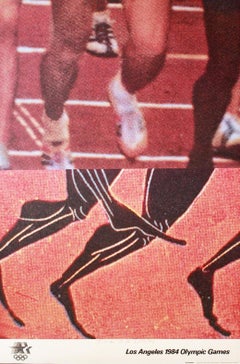Alpha 137 Gallery Prints and Multiples
1970s Conceptual Animal Prints
Lithograph, Offset
1980s Pop Art Abstract Prints
Screen, Lithograph, Offset
1970s Pop Art Still-life Prints
Lithograph, Offset
1960s Op Art Abstract Prints
Lithograph, Offset
2010s Pop Art Portrait Prints
Lithograph, Offset
1980s Contemporary Figurative Prints
Offset, Lithograph
1970s Abstract Geometric Abstract Prints
Lithograph
Early 2000s Minimalist Abstract Prints
Lithograph, Offset
2010s Contemporary Portrait Prints
Screen
1960s Abstract Abstract Prints
Lithograph, Offset
1990s Abstract Expressionist Abstract Prints
Offset, Lithograph
1980s Conceptual Abstract Prints
Lithograph
1990s Conceptual Figurative Prints
Board, Lithograph, Offset
1970s Abstract Geometric Abstract Prints
Lithograph
1960s Pop Art More Prints
Color, Lithograph
1960s Pop Art Abstract Prints
Engraving, Etching
1990s Pop Art Abstract Drawings and Watercolors
Ink, Lithograph, Offset
1960s Abstract Geometric Abstract Prints
Pencil, Screen
1970s Abstract Expressionist Abstract Prints
Lithograph, Offset
2010s Contemporary Landscape Prints
Screen
2010s Contemporary Abstract Prints
Screen
1990s Abstract Expressionist Abstract Prints
Paper, Mixed Media, Etching, Lithograph, Offset
2010s Realist Landscape Prints
Screen
Early 2000s Contemporary Portrait Prints
Felt Pen, Lithograph, Offset
Early 2000s Abstract Abstract Prints
Lithograph, Offset
1960s Pop Art Abstract Prints
Screen
1970s Pop Art Figurative Prints
Lithograph, Offset
2010s Contemporary Figurative Prints
Lithograph, Offset
2010s Pop Art Figurative Prints
Lithograph, Offset
2010s Conceptual Figurative Prints
Lithograph, Offset
1980s Pop Art Abstract Prints
Permanent Marker, Lithograph, Offset
1970s Pop Art Abstract Prints
Lithograph, Offset
1970s Abstract Expressionist Abstract Prints
Lithograph
Early 2000s Pop Art Figurative Prints
Lithograph, Offset
Early 2000s Contemporary Still-life Prints
Color, Stencil, Lithograph
Mid-20th Century Abstract Geometric Abstract Prints
Screen
1980s American Realist Still-life Prints
Lithograph, Offset
1960s Abstract Abstract Prints
Lithograph, Offset
Mid-20th Century Abstract Geometric Abstract Prints
Silk, Screen, Fabric
2010s Pop Art Abstract Prints
Lithograph, Offset
Early 2000s Contemporary Abstract Prints
Lithograph, Offset
1980s Pop Art Figurative Prints
Lithograph, Offset
1980s Street Art Abstract Prints
Felt Pen, Offset
1980s Pop Art Abstract Prints
Pencil, Lithograph, Offset
1970s Modern Still-life Prints
Etching
Early 2000s Street Art Abstract Prints
Offset, Ink, Board
Early 2000s Contemporary Figurative Prints
Offset, Lithograph, Permanent Marker
1980s Abstract Abstract Prints
Lithograph, Offset
1980s Abstract Expressionist Abstract Prints
Lithograph, Offset
Early 2000s Pop Art Figurative Prints
Offset, Lithograph
1980s Color-Field Landscape Prints
Lithograph, Monotype
1990s Contemporary Abstract Drawings and Watercolors
Mixed Media, Etching, Monotype
1980s Abstract Expressionist Abstract Prints
Screen
1880s Abstract Expressionist Abstract Prints
Lithograph
1970s Abstract Abstract Prints
Foil
1970s Pop Art Abstract Prints
Screen
1980s Pop Art Figurative Prints
Permanent Marker, Lithograph, Offset
1980s Abstract Abstract Prints
Etching, Aquatint, Lithograph
2010s Pop Art Abstract Prints
Ceramic, Porcelain, Mixed Media, Screen
2010s Pop Art Abstract Prints
Foil

